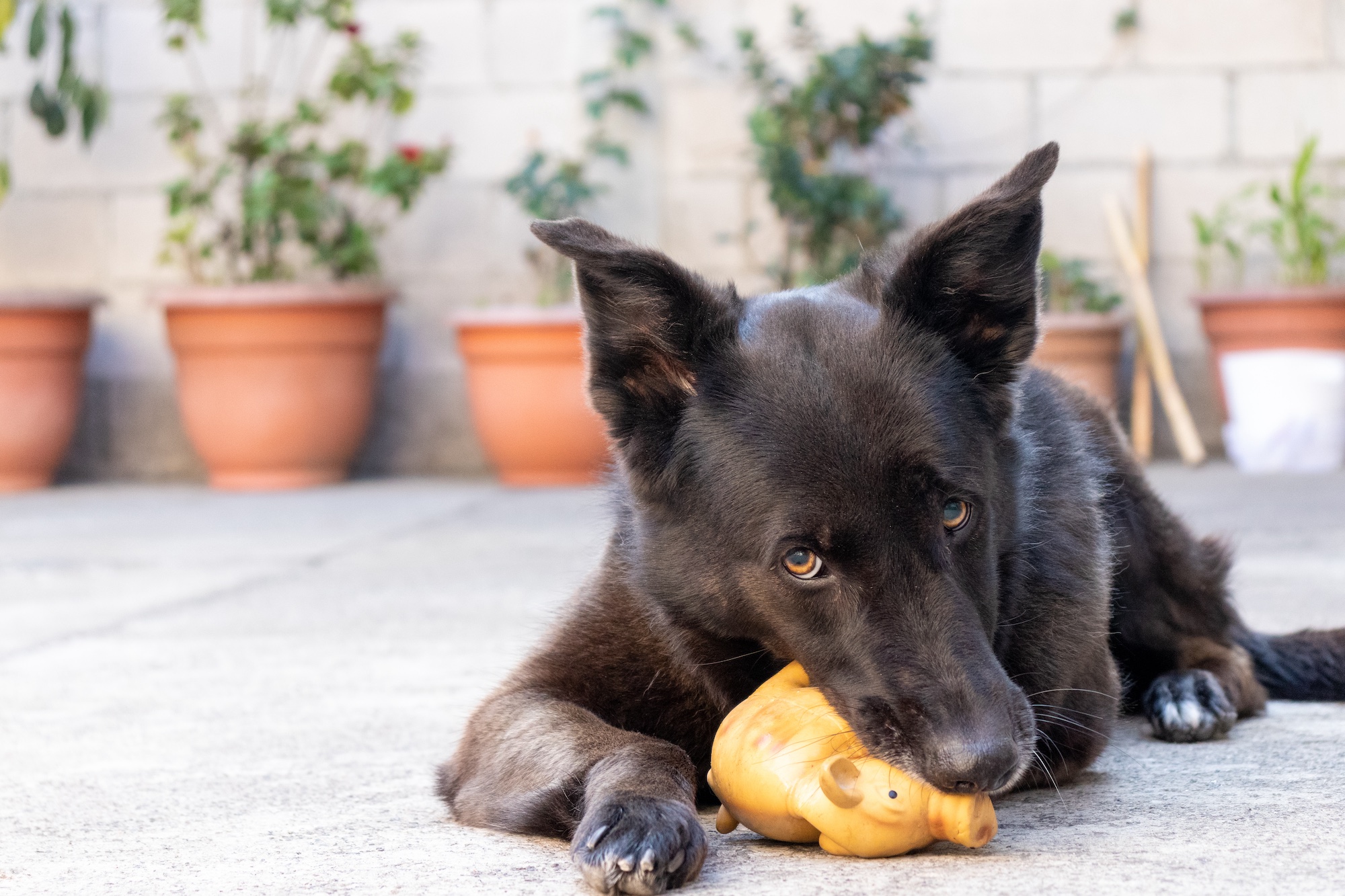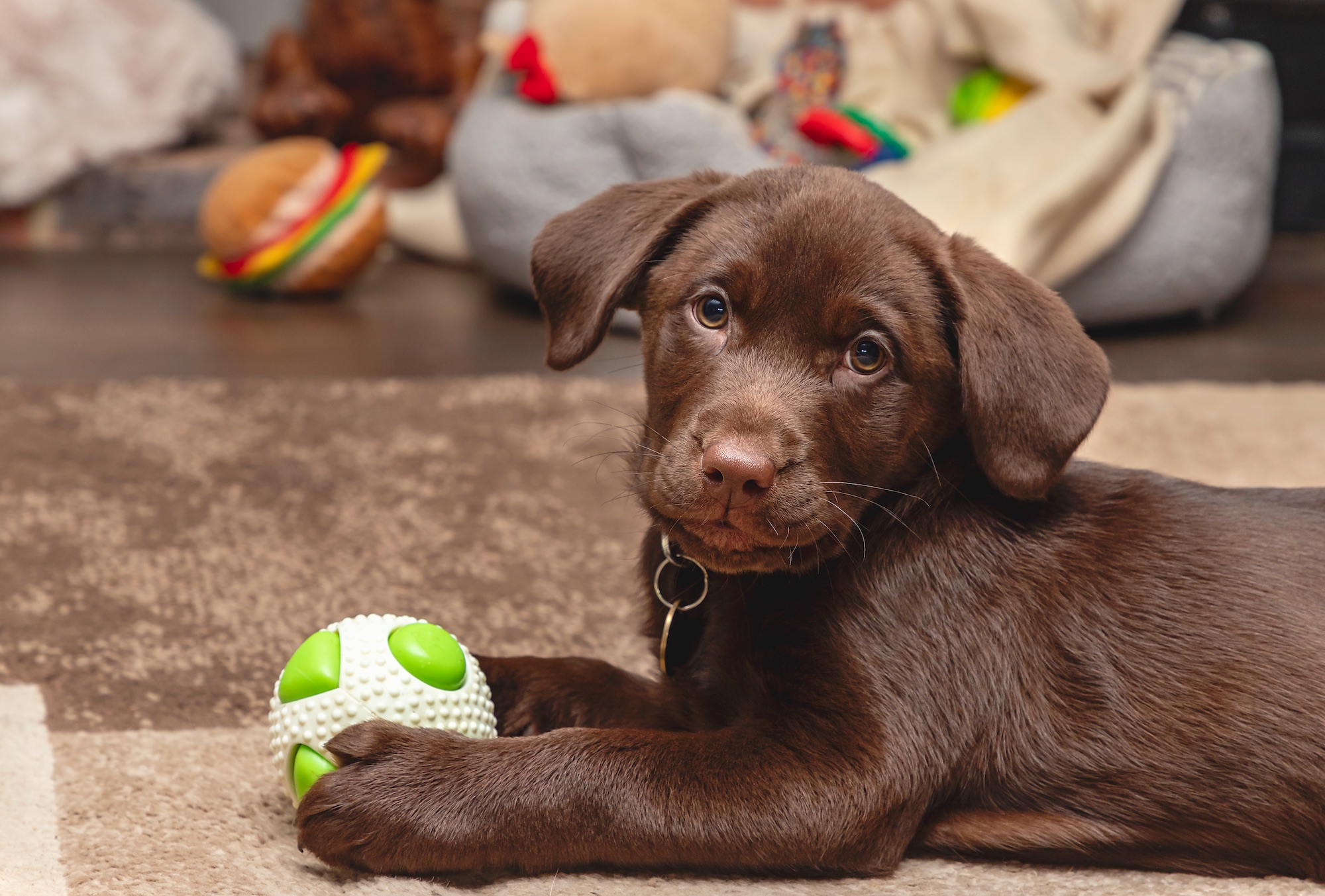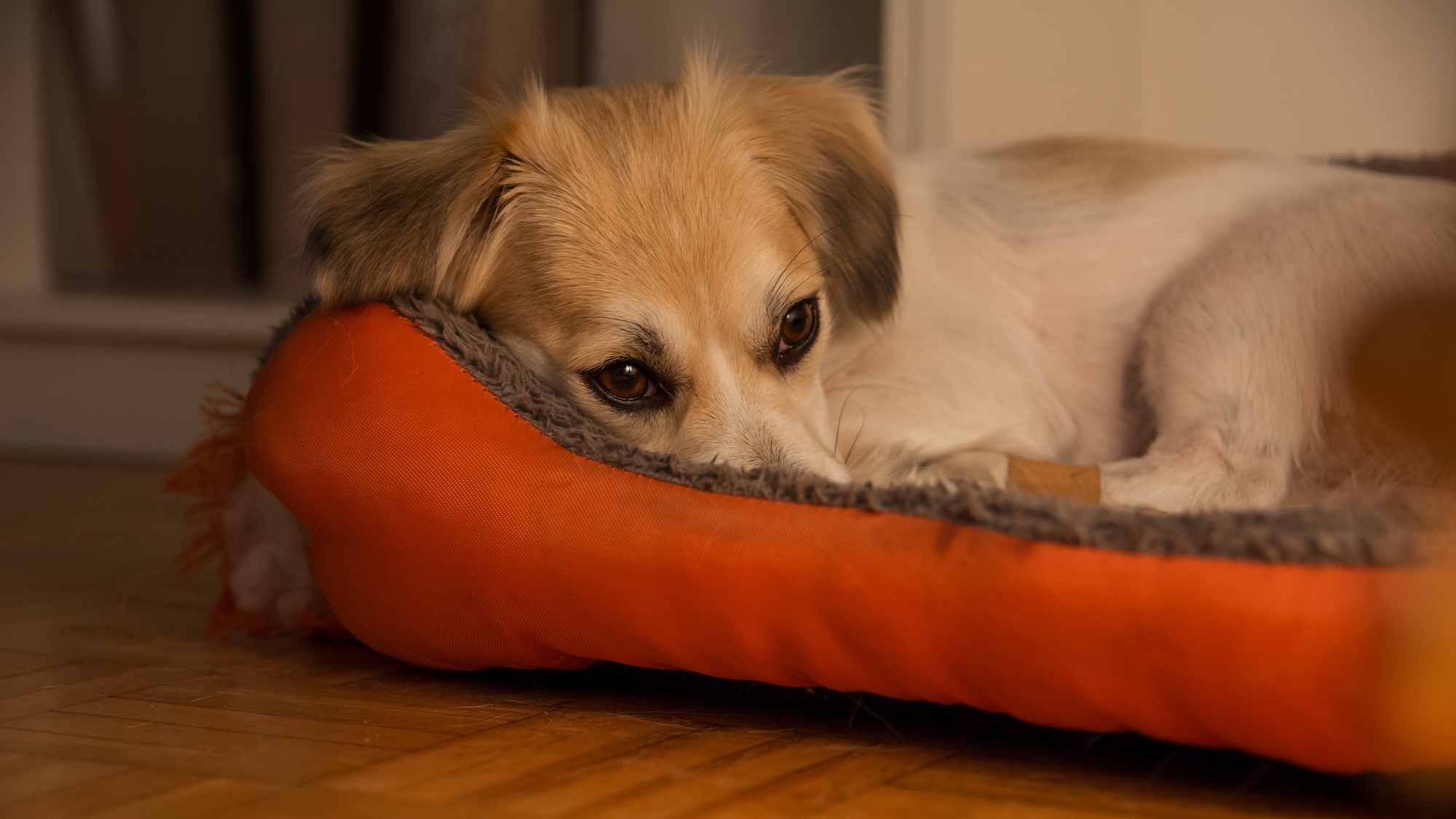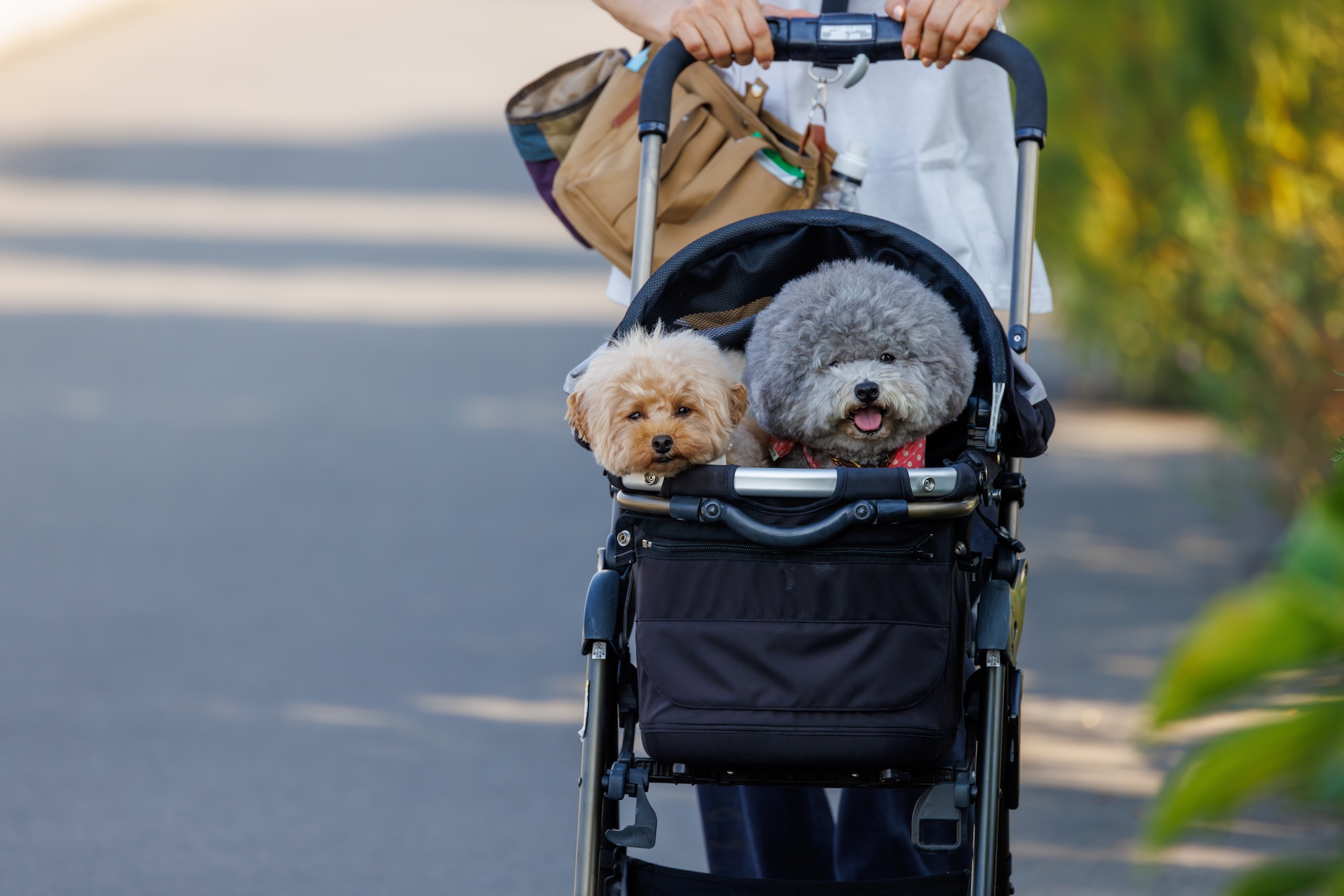Resource guarding can be a scary problem for dog people. If the dog you love stiffens up, growls, or even threatens to bite when you approach their food bowl or something else they find valuable, you might feel vulnerable or confused about what to do.
But if you take a methodical approach, there are ways to help a dog understand that you’re there to give them the things they need—not take them away. And, if you start early, you stand a good chance of preventing serious resource-guarding issues altogether. Here’s what trainers say you need to know about resource guarding, when it’s a problem, and how to address it.
What is resource guarding?
Resource guarding is when a dog tries to protect something they find valuable. Dogs often do this with food or chews, but may also guard toys, a bed, a favorite human, or anything else. Denise Herman, head trainer and founder of Empire of the Dog in New York City, says that a dog could even guard something like “a patch of sunlight.”
You may also hear resource guarding referred to as “possession aggression” or, if the dog is protecting food, “food aggression.”
To some degree, resource guarding is a natural behavior. But you need to recognize the signs of it so that you can prevent or manage it, protecting your dog and the people and animals they encounter.
Signs of resource guarding
Farrah Branson, the animal training manager at Seattle Humane, remembers how shelters used to check whether a dog had resource-guarding issues in the old days. “We had this fake hand,” she recalls. They’d lower it toward the dog’s food bowl. If the dog bit the fake hand, the shelter staff knew there was a problem. This method only worked once, she recalls—once a dog knew the hand was fake, they wouldn’t go for it again.
Today, trainers look for subtler signs of trouble.
Any indication that your dog is uncomfortable when a human or animal approaches their valuable item could be a sign of resource guarding. This could be as simple as: They’re eating, and when someone gets too close they stop (or hurry up so that they can wolf all the food down before anyone takes it). They might adopt a rigid body posture, growl, lick their lips, bare their teeth, or snap at the intruder. If they have space to walk away with the valuable object, they might do that.
Branson says that these days, trainers will start at a great distance from a new dog at the shelter while they’re eating and watch carefully as they move closer. If they see even tiny signs of resource guarding, they’ll stop their approach and begin tossing high-value treats (more on this below).
If you notice your dog guarding a resource, don’t try to snatch it away. That could escalate the situation. Instead, if the guarding is mild, try some of these training or management techniques. If the situation is dangerous, call in a qualified trainer.

How to prevent resource guarding
A dog can overcome resource guarding, but it’s preferable to prevent it. The best time to do this is in puppyhood, but you can and should do what you can to let any dog know that you are a source of good things, not someone who’s there to take them away. The objective: a dog who’s happy to see a person approach, even if they are eating or enjoying a favorite toy, because they think something even better is on the way. Here are some steps to teach your dog that their belongings are safe around you.
1. Show your dog that a person near their stuff is great news
From the moment you bring your dog home, you can make your approach to their food bowl a positive event. Start by dropping treats into their bowl without taking anything from them, and doing so from far enough away that they’re not worried.
2. Go slowly
Especially if you don’t know a dog well, start from a distance. At first, this might mean that you have to toss the treats. Only advance when they’re not showing any signs that they’re worried. Once the dog is actively happy to see you, you can try moving closer and, eventually, trading something they like for a treat and then giving it back. If they show any signs of fear or aggression, go back a step. Don’t force it.
3. Keep it up
Even once you see success, keep rewarding your dog when you go near their stuff.
“When I start with puppies,” Branson says, “the end goal for us is if a child is unattended and grabs for something from the dog, the dog will go, ‘Yep, it’s yours.”
To be clear, never let a child reach toward a dog’s food bowl at mealtime. They could get bitten and badly hurt. Still, Branson’s ideal is a dog who, if a child does make a mistake, won’t react. The way she tries to achieve this is by associating humans near food or other valuable items with good things happening.
“When a dog is little,” she says, “We trade high value resources: Bully stick; Here’s a piece of lamb lung. I take your bully stick away, I give you a piece of lamb lung, I give you your bully stick back. And what I’m trying to teach the dog is that I never take away resources without giving you something else.”
She describes the attitude this is meant to inspire in the dog: “I’ll always give it to you—you’re always going to make it worth my while.”
Specifically for children, Herman recommends “teaching them to go up and throw a bonus and walk away” from the dog. “A boomerang bonus, you can call it. Because then you’re training your dog that a kid coming up is good news for them.” The hope is that, if your child later makes a mistake and reaches too close to your dog’s food, the dog won’t react badly. But no matter how well you’ve trained your dog, you should teach your child not to get between them and their food. “No trainer,” Herman emphasizes, “is going to say there’s a guarantee.”
The bottom line is that getting puppies used to the idea that people near their food bowl are likely to come bearing gifts, and that if they give something up they’ll get something better back, is the most reliable way to yield adult dogs who are fine with you getting near their things.
Teaching your dog to consistently follow the “drop it” command can also help.

How to stop resource guarding
If your dog is already resource guarding, it might be tempting to try to simply take the item they’re guarding away. But if you do so, even with apparent success, you’ll probably be making a mistake.
“You want to win the war,” says Herman, “not the battle.” What this means is that it’s not enough to just get the item away—and it might be dangerous to try. Instead, you want to change how your dog feels about people getting near valuable items.
To do this, try a desensitization and counterconditioning process similar to the one we discussed for prevention.
1. Start where your dog feels comfortable
“Let’s say you have a dog who is guarding a food bowl,” Branson says. “I’m going to start as far back as possible—until he responds.” A response is any sign that the dog is uncomfortable with you being around the bowl, as outlined above. Branson finds a point where the dog isn’t showing signs of guarding, and then the training begins: She starts tossing high-value treats toward the dog’s bowl. If the dog gets upset, she slows down. This only works if the dog is comfortable receiving the treats.
2. Slowly ramp it up
The idea is to keep doing this until you’re able to move closer and closer. Eventually, “You put the chicken in the bowl, and you touch the bowl.” This is not a one-day project. It only works if the dog is happy the whole time, welcoming you as you get closer. If you try to go too fast, it’ll be counterproductive. Branson says to only move closer when your dog isn’t showing signs of stress. If you start at six feet away, stay there until your dog is happily taking treats at that distance, wagging their tail as you approach. Only then try moving to five feet away.
3. Keep at it
Be patient. “It may be a month’s worth of practice,” Branson says. But the dog sets the pace, and there’s no way to hit fast forward.
4. If you need help, call a professional
If the situation becomes hazardous—another dog or person has been bitten, for example, or you’re afraid that they might be—call a qualified trainer. Their methods should be similar to what we’ve outlined here, but their expertise may make the process safer for you and your dog.
Dog-dog versus dog-human resource guarding
If you have more than one dog in your household, they’re not going to agree 100% of the time. As long as no one gets hurt, and everyone is happy, that’s no big deal. Your dogs might bark at one another once in a while, and a certain dog might get priority over one resource or another—but if everyone’s going about their lives cheerfully, don’t worry too much about it. “As long as it’s not escalating,” Herman says, “I wouldn’t necessarily intervene unless there’s a risk to a human.”
“I have a female who’s 18 pounds,” says Branson of her multi-dog home, “and it used to be that she ran all the resources in my house. I could give everybody a bully stick in my house, but she would go around and select them—and my boy dogs, who were the most complacent dogs in the world, would be like, ‘Yeah, whatever, you can have it.”
This might upset some people, but Branson said it was fine. “Dogs don’t really understand your and my moral compass.” She just made sure that her boy dogs did get something to chew and enjoy when they were away from the girl who had her pick of the chews.
Of course, there are times when dogs really don’t get along, and that’s either making their quality of life worse or putting them in danger of bites and injuries. In that case, you will have to intervene for their own good.
Both Branson and Herman recommend using management techniques whenever possible to deal with dog-dog resource guarding. It’s much easier to feed dogs separately and let them enjoy high-value treats in their own space than to try to desensitize them to one another’s presence around their most prized possessions. “It can be done,” Branson says, “but the reason we tend to say to manage it is because it is really difficult and nuanced.”
Herman says that, of methods for handling resource guarding between dogs, “the easiest is to give them space for whatever it is they need.” So if your two dogs have issues with resource-guarding from one another at mealtime, feeding them separately could be simpler than trying to change how they feel about each other. She adds that, as a general rule, if she’s looking after dogs from separate households, she feeds them separately to be safe.
And make sure that both dogs have enough of the things they like. Dogs need plenty of mental stimulation and chewing time, after all. And when you take away items, Herman says, “the value of any one thing is going to go up.”
This doesn’t mean to leave high-value treats and toys out around dogs who will be in conflict over them—instead, let the dogs enjoy them separately in areas where they don’t have the opportunity to clash.
Branson recommends keeping possible resource-guarding issues in mind when you bring your dog out in public to be around other pups. She advises not letting your dog carry something like a bully stick to the park if they’re going to meet other dogs who might try to take it. “It could cause a problem,” she says, “even if this dog is a golden retriever, is the most friendly, outgoing dog I’ve ever seen, and has never shown a problem before.”
If resource guarding suddenly arises or escalates, check with the vet
Sometimes a dog will start behaving differently due to pain. So if your previously calm adult dog suddenly and inexplicably develops resource-guarding issues, your first stop should be the veterinarian.
“We had this dog in the shelter who all of a sudden started biting people. He never had before,” Branson recalls. “It turned out his tail had been broken.” Getting treatment solved his apparent behavioral issue.
Take your time, and get help if you need it
Again, curbing a dog’s resource-guarding behavior is more likely to take months than hours. You are trying to teach them that, when you approach, they don’t need to protect what they have—and, in fact, may want to prepare for additional good fortune. Go slowly and be patient. If you feel like you’re not making progress—and especially if you’re afraid that any humans or animals could get bitten or otherwise hurt—call a qualified trainer to give you a hand.




